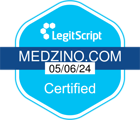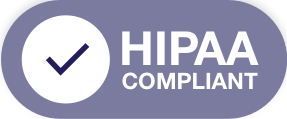Information

Written by Dr Kimberly Langdon, MD
Information last reviewed 06/21/19
About
Acne is characterized by noninflammatory, open or closed blackheads and by inflammatory pimples that affect the face, upper chest, and upper back. Acne is the most common skin disease in the United States, affecting 80% of Americans at some point in their lives. Severe acne affects 20%, which can result in permanent physical and mental scarring.
Acne presents itself during puberty when the ovaries and testicles begin producing androgenic (male) hormones. It can affect adults, too. Twelve percent of women and five percent of men still have acne at age 25. By 45 years old, five percent of both men and women have acne.
Causes
During puberty, the body starts to produce more androgenic hormones. Androgenic hormones are involved in producing male characteristics, but the hormones are also present in women. These hormones can overstimulate sebaceous glands in the skin. The sebaceous glands produce an oil known as sebum. At normal levels, sebum is involved in keeping your hair and skin healthy, but if you produce too much sebum, this can clog up the tiny hair follicles/pores in your skin. This then traps the Cutibacterium acnes bacteria inside, allowing the bacteria to multiply and cause inflammation in the area. It is this inflammation that causes the spots that are characteristic of acne.
Acne is a very common condition, affecting 80% of people in the United States. Despite its prevalence, acne doesn’t affect everyone. Genetics and other factors can play a role in the likelihood of you developing acne. Genetics can have an effect upon your hormone levels, or the amount of dead skin cells you produce and a range of other factors that can predispose you to acne. Besides genetics, environmental factors can play a role in acne. Using cosmetics, lotions, and hair products may worsen acne as this can alter the balance of oils on your skin, and also introduce more products that can clog the pores and hair follicles, encouraging a build-up of sebum and bacteria. For similar reasons, wearing headbands, shoulder pads, helmets and backpacks can aggravate the problem by encouraging sebum to build up and pores to become blocked. Some medications can also cause acne, such as steroids, lithium, and anti-seizure medications. Whilst acne is commonly associated with puberty, other changes in hormones can also contribute to the problem, including pregnancy, polycystic ovarian syndrome and adrenal problems.
Symptoms
The signs and symptoms of acne are:
- Red bumps/spots on the face
- Pus-filled whiteheads
- Blackened pores (blackheads)
- Flaking skin
- Scarring from spots
- Soreness
- Hair growth in unwanted places (if your acne is a consequence of PCOS)
Diagnosis
Acne is diagnosed by a physical examination of your skin. The doctor will be looking for inflamed spots, plugged pores with blackheads or open pores with whiteheads. Acne can also be classified as Mild, Moderate or Severe which may have an influence upon how it is treated. The classifications are outlined below:
- Mild acne: Plugged pores/follicles and a few pimples (red base and white tip)
- Moderate acne: Plugged pores/follicles and more inflamed pimples
- Severe acne: Plugged pores/follicles, many pimples, large spots (greater than 5mm) and some scarring.
After making a physical examination and looking at your medical history, a doctor may suspect that your acne is caused by an underlying condition such as polycystic ovarian syndrome (PCOS) or adrenal problems. If this is the case, they may conduct some blood tests.
Treatment
Treatment of acne is based on the underlying cause, severity, and the type of acne you experience. Creams known as topical retinoids and antibiotics are recommended for all people who suffer from acne.
Antibiotics can be given in the form of both topical creams and oral tablets. They work by killing the bacteria that trigger the inflammation in acne. Examples of antibiotics used for acne include:
- Topical:
- Clindamycin
- Erythromycin
- Dapsone 7.5% (used daily)
- Oral:
- Doxycycline
- Trimethoprim / Sulfamethoxazole
Topical retinoids are creams that are used to reduce inflammation in the skin, to prevent plugged pores and to improve cell turnover, which promotes healing.
Topical retinoids are always combined with Benzoyl Peroxide, to help prevent antibiotic resistance. The Benzoyl Peroxide kills some of the bacteria that lives on the skin, helping to reduce the likelihood of bacteria building up inside clogged pores.
Lifestyle changes can also help to reduce acne. It is recommended that you make the following changes:
- Low sugar diet
- Avoid junk foods
- Avoid milk or reduce your milk intake
- Use mild exfoliation products on your skin
- Wash your skin gently and avoid harsh rubbing of the skin.
Some people find the following interventions can also help their acne:
- Acne extraction: This removes debris from the pores, helping to prevent acne.
- Chemical facial peels with glycolic acid or salicylic acid: This can open the pores, making it less likely that they will become blocked.
- Light-based therapy and laser therapy: This can help to reduce scarring.
- Steroid injections: An injection is made directly into the pimple to reduce inflammation.
If acne is caused by hormonal changes in women, birth control pills may be recommended to help reduce acne. Testosterone is one of the hormones implicated in acne. Birth control pills with higher levels of estrogen and lower levels of progesterone can help the body to bind to free testosterone and prevent it from having negative effects on the skin. Birth control pills are especially useful in cases where acne is caused by PCOS. The types of birth control pills used for acne contain:
- ethinyl estradiol and norgestimate
- ethinyl estradiol and drospirenone
Aldosterone antagonists, such as Spironolactone tablets, may be given off-label if other treatments don’t work for you. How aldersterone antagonists affect acne is not entirely known, however, it is believed that it works by blocking a hormone receptor leading to a reduction in the amount of sebum produced.
Q&A
Leave it alone and apply benzoyl peroxide. Or, if it gets to the point that the white pus is about to come out, you can gently clean the area with warm soapy water, then gently apply pressure with tips of fingers (not nails) to release the pus. Do not keep squeezing. Apply an ice cube for a few minutes to keep redness and swelling to a minimum and then apply benzoyl peroxide.
Change your pillow cover frequently and some report silk fabric is best. Always wash face and apply benzoyl peroxide before bed time. If you play sports like hockey or football, always wash hair and keep shoulder pads and inside of helmets washed and sterilized. Avoid moisturizing hair products or pomades. Use only non-comedogenic makeup or moisturizers. Don’t touch your face without clean hands.
Disclaimer: This is not medical advice. You and your physician will determine if and how you should take any medication prescribed to you following a medical consultation.
- Thiboutot D, Gollnick H, Bettoli V, Dréno B, Kang S, Leyden JJ, et al. New insights into the management of acne: an update from the Global Alliance to Improve Outcomes in Acne group. J Am Acad Dermatol. 2009 May. 60(5 Suppl):S1-50.
- Goulden V, McGeown CH, Cunliffe WJ. The familial risk of adult acne: a comparison between first-degree relatives of affected and unaffected individuals. Br J Dermatol. 1999 Aug. 141(2):297-300.
- Collier CN, Harper JC, Cafardi JA, Cantrell WC, Wang W, Foster KW, et al. The prevalence of acne in adults 20 years and older. J Am Acad Dermatol. 2008 Jan. 58(1):56-9.
- Davis EC, Callender VD. A review of acne in ethnic skin: pathogenesis, clinical manifestations, and management strategies. J Clin Aesthet Dermatol. 2010 Apr. 3(4):24-38.
- Momin SB, Peterson A, Del Rosso JQ. A status report on drug-associated acne and acneiform eruptions. J Drugs Dermatol. 2010 Jun. 9(6):627-36.
- Basler RS. Acne mechanica in athletes. Cutis. 1992 Aug. 50(2):125-8.
- Shaw JC, White LE. Persistent acne in adult women. Arch Dermatol. 2001 Sep. 137(9):1252-3.













Quick and discreet
I ordered Azithromycin tablets for chlamydia treatment, received it next day in a brown discreet pack, and cheaper than all other pharmacies, can't ask for more
Jordan McCann